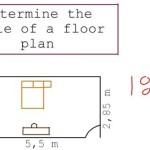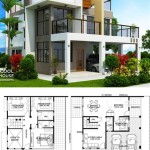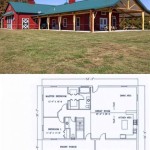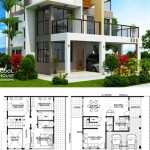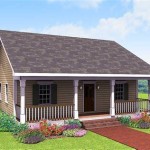Exploring Tesla House Plans: How To Design a Sustainable Home
The integration of sustainable practices into residential architecture is no longer a niche trend but a growing expectation. As homeowners become increasingly aware of their environmental impact and long-term cost savings, the demand for energy-efficient and eco-friendly homes is escalating. Tesla, a company synonymous with innovation in electric vehicles and renewable energy solutions, offers inspiration and technologies that can be incorporated into sustainable home designs. This article explores essential aspects of integrating Tesla-inspired solutions into house plans and offers guidance on designing a sustainable home that minimizes environmental impact and maximizes energy efficiency.
Designing a sustainable home involves a holistic approach that considers various aspects, from site selection and building materials to energy generation and water conservation. A "Tesla house plan" doesn't refer to a specifically branded architectural blueprint, but rather a design philosophy that embraces energy independence, smart technology integration, and environmentally conscious construction techniques, mirroring Tesla's core principles.
1. Maximizing Energy Efficiency Through Design and Insulation
The foundation of any sustainable home lies in its energy efficiency. A well-designed house minimizes energy consumption for heating, cooling, and lighting. The first step involves optimizing the building's orientation to maximize solar gain in the winter and minimize it in the summer. Employing passive solar design principles can significantly reduce the reliance on mechanical heating and cooling systems.
Effective insulation is crucial for maintaining a comfortable indoor temperature and reducing energy waste. High-performance insulation materials, such as spray foam, cellulose, or mineral wool, provide superior thermal resistance compared to traditional fiberglass insulation. Properly insulating walls, roofs, and floors creates a thermal envelope that prevents heat loss in the winter and heat gain in the summer.
Air sealing is another important aspect of energy efficiency. Sealing cracks and gaps in the building envelope prevents air leakage, which can account for a significant portion of energy loss. Techniques like blower door testing can identify areas of air leakage, allowing for targeted sealing measures. The use of energy-efficient windows and doors with low-E coatings and insulated frames further contributes to minimizing heat transfer.
Beyond the building envelope, efficient appliances and lighting fixtures play a vital role in reducing energy consumption. Energy Star-rated appliances consume less energy than standard models, and LED lighting is significantly more energy-efficient than incandescent or fluorescent lighting. Smart home technology can also be integrated to automate lighting and appliance usage, optimizing energy consumption based on occupancy and time of day.
2. Integrating Renewable Energy Sources: Solar and Battery Storage
Harnessing renewable energy sources is a cornerstone of sustainable home design. Solar photovoltaics (PV) are a primary option for generating electricity on-site. Tesla, through its Powerwall battery storage system, offers a compelling solution for storing excess solar energy generated during the day for use at night or during power outages. Integrating solar panels and battery storage can significantly reduce or even eliminate reliance on the grid.
The size and configuration of the solar panel system should be determined based on the home's energy consumption and available roof space. A professional solar installer can assess the site and recommend an optimally sized system. The installation should comply with local building codes and electrical regulations. The placement of solar panels is critical to maximizing sun exposure. Generally, south-facing roofs are ideal in the northern hemisphere.
Tesla's Powerwall allows homeowners to store excess solar energy and use it to power their homes when the sun is not shining. This reduces reliance on the grid and provides backup power during outages. The Powerwall can also be programmed to charge during off-peak hours when electricity rates are lower, further reducing energy costs. Intelligent energy management systems, like those offered by Tesla, can optimize energy usage based on real-time data and user preferences.
While solar is the most prevalent renewable energy source for residential applications, geothermal energy can also be explored. Geothermal systems utilize the earth's stable temperature to provide heating and cooling. Although the initial investment is higher than solar, geothermal systems offer long-term energy savings and a reduced carbon footprint.
3. Sustainable Materials and Water Conservation Strategies
The choice of building materials significantly impacts the environmental footprint of a home. Opting for sustainable materials, such as reclaimed wood, recycled content materials, and sustainably harvested lumber, reduces the demand for virgin resources and minimizes waste. Materials with low embodied energy, meaning the energy used to extract, process, and transport them, are also preferred.
Concrete, a commonly used building material, has a high carbon footprint due to the production of cement. Using supplementary cementitious materials (SCMs), such as fly ash or slag, as partial replacements for cement can significantly reduce the concrete’s carbon footprint. Alternative building materials like bamboo, hempcrete, and straw bales offer sustainable alternatives to conventional materials but may require specialized construction techniques.
Water conservation is another critical aspect of sustainable home design. Implementing water-efficient fixtures, such as low-flow toilets, showerheads, and faucets, can significantly reduce water consumption. Rainwater harvesting systems can collect rainwater for non-potable uses like irrigation and toilet flushing. Greywater recycling systems can treat and reuse wastewater from showers and sinks for irrigation. Landscaping with drought-tolerant plants reduces the need for irrigation, further conserving water.
Sustainable landscaping practices also support biodiversity and reduce the environmental impact of the property. Choosing native plants that are adapted to the local climate minimizes the need for fertilizers, pesticides, and excessive watering. Permeable paving materials allow rainwater to infiltrate the ground, reducing runoff and replenishing groundwater supplies. Composting food scraps and yard waste reduces the amount of waste sent to landfills and provides nutrient-rich compost for landscaping.
Furthermore, consider the durability and longevity of the materials employed. While a less expensive product might seem appealing initially, its lifespan could be significantly shorter, requiring more frequent replacements and ultimately generating more waste. Materials that are easily maintained and repaired contribute to the overall sustainability of the home.
Smart home technology can extend sustainable practices. Smart irrigation systems use weather data and soil moisture sensors to optimize watering schedules, preventing overwatering and conserving water. Leak detection systems can identify and alert homeowners to water leaks, preventing water waste and damage to the property.
Designing a Tesla-inspired, sustainable home requires careful planning and consideration of various factors. By prioritizing energy efficiency, integrating renewable energy sources, and utilizing sustainable materials and water conservation strategies, homeowners can create homes that minimize their environmental impact and provide long-term cost savings. Consulting with architects, builders, and sustainability experts with experience in green building practices is crucial for ensuring the successful implementation of a sustainable home design.
The journey toward sustainable living is an ongoing process that requires continuous learning and adaptation. By embracing innovative technologies and environmentally conscious practices, homeowners can create homes that are not only comfortable and aesthetically pleasing but also contribute to a healthier planet.

Tesla Homes When Can I Buy A House July 2024 Sustainable Living Eco Friendly Home Solutions Innovative Smart Top Rated Installations Energy Efficient

The Tesla Of Prefabricated Homes More Eco Friendly Designs That Are Future Architecture Yanko Design

Tesla S New Tiny House For Sustainable Living

Building A Sustainable House How To Build An Eco Friendly Home

Tesla S New 10 000 Home For Sustainable Living

The Tesla Of Homes Why Passive Houses Are Future

Sustainable Homes Designed To Reduce Carbon Footprint Help You Achieve That Eco Friendly Lifestyle Yanko Design

Tesla House Plan Modern 4 Bd Open Concept Home Design Mm 1791 A

Tesla House Plan Modern 4 Bd Open Concept Home Design Mm 1791 A

Unveiling The Unboxable A Look At Tesla S 10 000 Sustainable Home Concept
Related Posts

